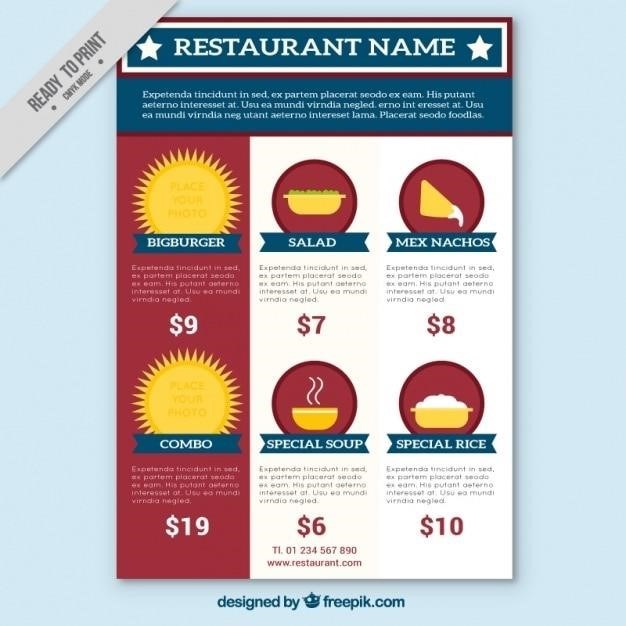Bozeman, MT TV Guide⁚ A Comprehensive Guide
Your complete guide to Bozeman, Montana television listings. Find local channels, cable, satellite, and antenna TV schedules. Explore major network programming from ABC, CBS, NBC, and Fox, including detailed schedules for KBZK, KWYB, KDBZ, and KUSM. Discover online resources for up-to-the-minute TV listings in Bozeman, MT.
Local Channels and Listings
Bozeman, Montana offers a variety of local television channels catering to diverse interests. Viewers can access a range of programming through various methods including over-the-air antennas, cable television providers, and satellite services. The availability of specific channels may vary depending on your chosen reception method and location within Bozeman. Many residents rely on a combination of these methods to access their preferred channels. For example, an over-the-air antenna might provide access to major network affiliates like KBZK (CBS), KWYB (ABC & Fox), and KDBZ (NBC), while cable or satellite subscriptions would offer access to a broader selection of channels, including premium and specialty channels.
To find the specific channels available in your area, you can consult your cable or satellite provider’s channel guide, or utilize online resources to check local broadcast listings for your area code (59715, 59718, 59719, 59771, 59772, 59773). Remember to check your specific provider’s channel lineup, as availability changes frequently. Local news channels provide important community updates, while national networks offer a wide range of entertainment, sports, and informational programs. Utilizing a combination of reception methods ensures access to a broad range of television content in the Bozeman area.
Finding Your Local Bozeman Channels
Accessing your local Bozeman television channels depends on your preferred viewing method⁚ over-the-air antenna, cable, or satellite. Over-the-air reception, using an antenna, is a cost-effective option for receiving free, broadcast channels. However, the number of channels received depends on your antenna’s quality and your location within Bozeman. Signal strength can be affected by terrain and distance from broadcast towers. To optimize reception, consider using a high-quality antenna and strategically positioning it for optimal signal strength. Experimenting with antenna placement, including height and direction, is crucial for maximizing channel reception.
Cable television provides a wider range of channels, including local stations, but requires a subscription. Cable providers offer various packages, allowing you to choose a plan that suits your viewing preferences and budget. Contact local cable providers to inquire about channel lineups and packages available in your Bozeman area. Satellite television offers another option, providing access to numerous channels, including local programming, but also requires a subscription and installation. Satellite providers often require professional installation to ensure optimal signal reception. Similar to cable, various packages are offered with different channel selections and costs. Research the services and plans offered by satellite providers in your area to determine which best fits your needs.
Cable, Satellite, and Antenna TV Listings
Obtaining detailed television listings for Bozeman, MT, using cable, satellite, or antenna services, involves several approaches. For cable television subscribers, the most straightforward method is to consult your cable provider’s on-demand guide or their website. Many providers offer online interfaces that allow you to search for programs, browse channel lineups, and set reminders. The specifics of navigating these interfaces vary by provider, so consult your provider’s customer support or website for detailed instructions. Satellite television users can access their programming guides through their receiver’s on-screen menu or via the provider’s website or mobile app. These guides often include detailed program information, including descriptions, ratings, and cast lists.
For over-the-air antenna users, accessing local television listings requires a different approach. Many websites and apps provide free, comprehensive television listings for local broadcast channels. These online resources often include detailed schedules, allowing you to search for programs by channel, time, or keyword. Additionally, printed television guides, available at grocery stores and other retail locations, can be a helpful resource for those who prefer a physical copy of the listings. Remember that online listings are often updated regularly, so always check the source’s last updated date to ensure accuracy.
Major Network Schedules⁚ ABC, CBS, NBC, Fox
Staying up-to-date on your favorite shows from major networks in Bozeman, MT is easier than ever. For ABC programming, KWYB-LD serves the area, broadcasting a mix of national and local programming. Their schedule is readily available online through their website or via various TV listing apps. Similarly, CBS programming is delivered through KBZK, another local station with an online presence providing a complete schedule. This allows viewers to easily check for prime-time shows, local news broadcasts, and daytime programming. NBC viewers in Bozeman rely on KDBZ-CD. Their schedule, including local news, national programming, and late-night shows, can be found on their website or through online TV guides.
Fox programming in the Bozeman area is also broadcast on KWYB-LD2, sharing a channel with ABC. This means that access to the Fox schedule is often intertwined with the ABC schedule on their website or through aggregator sites. To avoid confusion, it’s helpful to confirm the specific network and channel when viewing online schedules. Many websites dedicated to television listings compile schedules from various sources, including these four major networks, providing a comprehensive overview of daily and weekly programming. These websites usually allow searches by channel, time, show title, or genre, making it easy to locate your preferred shows.
KBZK (CBS) Bozeman, MT Schedule
KBZK, the CBS affiliate serving Bozeman, Montana, offers a diverse programming lineup catering to local and national audiences. Their daily schedule includes a mix of news, entertainment, and sports programming. Viewers can expect to find local news broadcasts throughout the day, providing updates on local events, weather, and community news. In the evenings, KBZK airs prime-time programming from the CBS network, featuring a variety of shows, including dramas, comedies, and reality television. The station also broadcasts national news programs, ensuring viewers stay informed about current events on a broader scale.
Weekends on KBZK typically feature a mix of syndicated programming and special events. Sports enthusiasts can tune in for national and sometimes regional sports coverage, depending on the season. To find the most up-to-date and detailed schedule, viewers are encouraged to visit KBZK’s official website. The website usually provides a detailed seven-day TV schedule, allowing viewers to plan their viewing in advance. In addition to the standard TV schedule, KBZK’s website often includes information about upcoming special programs, local events, and community announcements.
Alternatively, various online TV guide services provide access to KBZK’s schedule. These services often offer the ability to search by program, time, and date, allowing for customized viewing options. Utilizing these tools provides a convenient way to stay informed about your favorite shows and upcoming broadcasts on KBZK.
KWYB (ABC & Fox) Bozeman, MT Schedule
KWYB, a dual-affiliate station broadcasting both ABC and Fox programming in Bozeman, Montana, presents a diverse schedule blending national network shows with local news and community features. The station’s daily schedule incorporates local news broadcasts, providing crucial updates on regional events, weather forecasts tailored to the Bozeman area, and features focusing on local businesses and community happenings. This commitment to local news ensures that viewers stay informed about matters directly affecting their lives.
During primetime hours, KWYB airs a selection of shows from both the ABC and Fox networks, offering a wide range of programming to suit diverse tastes. Viewers can expect to find popular dramas, comedies, and reality TV shows from both networks. The station strategically schedules its programming to maximize viewership, often airing popular shows during peak viewing times. Weekend schedules on KWYB usually include a mix of syndicated shows, alongside special programming and potentially local events, depending on the season and local happenings.
To access the most accurate and detailed schedule, viewers are recommended to check KWYB’s official website. The website typically provides a comprehensive seven-day TV schedule, allowing viewers to plan their viewing experience. Additionally, the website often includes details about upcoming special events, community announcements, and any changes to the regular programming schedule. Several online TV guide services also offer access to KWYB’s schedule, providing alternative ways to view programming information.
KDBZ (NBC) Bozeman, MT Schedule
KDBZ, the NBC affiliate serving Bozeman, Montana, offers a comprehensive schedule blending national NBC programming with local news and community-focused segments. The station’s daily schedule is structured to incorporate local news broadcasts, providing essential updates on regional events, weather forecasts specifically tailored to Bozeman’s climate, and segments highlighting local businesses and community initiatives. This dedication to local news ensures that viewers are well-informed about matters directly impacting their lives within the Bozeman area.
During primetime, KDBZ showcases a selection of popular shows from the NBC network, catering to a broad range of viewing preferences. Expect a mix of primetime dramas, comedies, and reality TV shows, strategically scheduled to maximize viewership during peak hours; Weekends on KDBZ often feature a blend of syndicated programming, special broadcasts, and occasionally, local events, depending on the time of year and community activities. This approach ensures diverse programming to engage viewers throughout the week.
For the most up-to-date and detailed KDBZ schedule, it is recommended to consult the station’s official website. The website usually provides a comprehensive seven-day TV guide, enabling viewers to plan their viewing in advance. Furthermore, the website often features details about upcoming special events, local announcements, and any adjustments to the regular programming schedule. Numerous online TV guide platforms offer access to KDBZ’s schedule, offering alternative methods to access programming information.
KUSM (PBS) Bozeman, MT Schedule
KUSM, Bozeman’s public broadcasting station, offers a diverse schedule reflecting PBS’s commitment to educational and enriching programming. Unlike commercial channels, KUSM’s schedule prioritizes educational shows, documentaries, and cultural programs, providing viewers with a unique alternative to mainstream television. The daily schedule is meticulously planned to incorporate a mix of children’s programming, aimed at engaging young viewers with educational and entertaining content, and adult-focused documentaries, exploring a wide range of topics from science and nature to history and current affairs.
KUSM’s primetime often features critically acclaimed documentaries and high-quality dramas, showcasing both classic and contemporary productions. The station also frequently airs special programming, including live performances, special events, and educational series that align with PBS’s mission. Weekends often feature longer documentaries, allowing viewers ample time to immerse themselves in in-depth storytelling. KUSM often broadcasts local news segments providing updates on community events and initiatives, blending national PBS programming with local relevance.
For a detailed, up-to-date schedule, consult the KUSM website or your local cable/satellite provider’s online guide. These resources usually provide a seven-day program guide, enabling viewers to plan their viewing experience. Check for specific times and dates for special events and programs, as these can vary throughout the year; KUSM frequently promotes its upcoming programs through its website and social media channels, ensuring viewers stay informed about new and upcoming content.
Online Resources for Bozeman TV Listings
The digital age offers numerous convenient ways to access Bozeman, MT TV listings. Websites dedicated to television schedules, such as those provided by cable and satellite providers, are readily available. These platforms typically allow users to search by channel, date, and even keyword, offering a detailed program guide for the week. Many providers offer personalized accounts, allowing users to save their favorite channels and receive notifications about upcoming shows or special events.
Beyond provider-specific websites, several third-party websites aggregate TV listings from various sources. These sites often allow users to filter results based on genre, time, and network, offering a comprehensive overview of programming across different channels. Some websites also integrate with streaming services, providing a combined guide for both live and on-demand content. These platforms regularly update their databases to ensure accuracy, offering a reliable source for current TV listings.
Social media can also be a useful tool. Many local news channels and television stations maintain active social media presences. These platforms often post daily program schedules or highlight upcoming special events or programs. Following these accounts can provide additional updates and reminders about favorite shows, keeping viewers informed about schedule changes or new programming. Remember to verify information from unofficial sources with the official station or provider websites for the most accurate data.




















